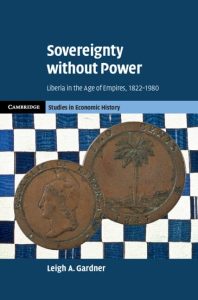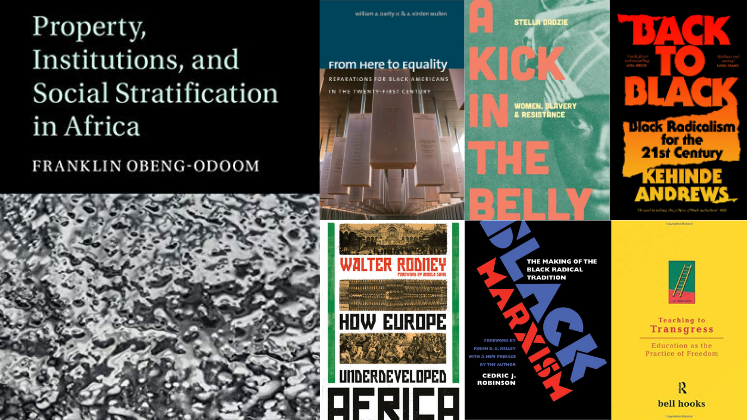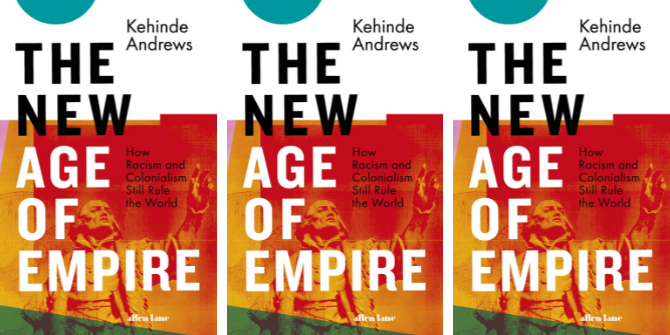In Sovereignty without Power: Liberia in the Age of Empires, 1822–1980, Leigh Garner traces the history of Liberia’s economy and analyses how it was impacted by continuous sovereignty. A formidable study of an overlooked subject, this book also holds significant comparative value beyond the Liberian context, writes Etienne Le Rossignol,
Sovereignty without Power: Liberia in the Age of Empires, 1822–1980. Leigh Garner. Cambridge University Press. 2022.
You can watch a video on LSE’s YouTube channel where Professor Leigh Gardner explains the reasons behind the dollarisation of the Liberian economy.
 In her latest book, Sovereignty without Power, Leigh Gardner asks what political independence meant for Liberia in the modern age of empires (the 19th and 20th centuries) and how continuous sovereignty shaped economic development in the long run. To answer these ambitious questions, Gardner delves into Liberia’s economic and political history, a country in West Africa founded in 1847 to repatriate black populations from the United States to Africa following the emancipation movement.
In her latest book, Sovereignty without Power, Leigh Gardner asks what political independence meant for Liberia in the modern age of empires (the 19th and 20th centuries) and how continuous sovereignty shaped economic development in the long run. To answer these ambitious questions, Gardner delves into Liberia’s economic and political history, a country in West Africa founded in 1847 to repatriate black populations from the United States to Africa following the emancipation movement.
Sovereignty without Power is a formidable, in-depth work that makes many contributions to our understanding of Liberia’s political and economic history between 1820 and 1980, with implications for other nations’ post-colonial trajectories. Throughout the book, numerous parallels are drawn with the experience of different sovereign (Peru, Japan, Mexico) or colonised (Ghana) countries, giving the book a universal appeal that goes beyond the case study, illustrating that Liberia’s trajectory is not unique.
Throughout the book, numerous parallels are drawn with the experience of different sovereign (Peru, Japan, Mexico) or colonised (Ghana) countries, giving the book a universal appeal that goes beyond the case study, illustrating that Liberia’s trajectory is not unique.
The book begins with an original contribution: the reconstruction of a time series of Liberia’s GDP from 1820 to recent years. The significance of this work must be emphasised, given the arduous nature of the task at the archives in Monrovia and elsewhere, which is more akin to the work of an archaeologist than an economic historian. The chapter title, “Reconstructing the Fragments”, bears witness to this. The reconstructed picture reveals three main phases. The first phase runs from the 1820s, when the first settlers came ashore, to the 1870s, a period of expansion and economic growth similar to that of other West African countries. This period of economic growth was followed by a lean period until the 1930s and the arrival of Firestone – once the world’s largest rubber concessionaire. The period of concessions – lasting from 1930 until Sergeant Doe’s coup d’état, which put an end to the True Whig Party’s over 150-year domination – witnessed an increase in GDP per capita, but also an increase in economic and social inequalities, with virtually no redistribution from the Americo-Liberian elite to African Liberians. This phase of increasing political, economic, and social disparities ended in blood and fury during the two Liberian civil wars of the 90s and the early 2000s, which caused the death of more than 250,000 civilians and military personnel.
The book aims to understand Liberia’s use of sovereignty and how sovereignty influenced the country’s GDP over time.
The book aims to understand Liberia’s use of sovereignty and how sovereignty influenced the country’s GDP over time. Between 1847 and 1980, sovereignty unsurprisingly enabled Liberia to function as a modern state capable, on paper, of deciding its destiny. Among many other things, sovereignty allowed Liberia to resolve territorial disputes with its neighbours, introduce measures to tax foreign ships, control maritime trade and take a seat at the table of nations. Liberia was also empowered to mint its own currency – the Liberian dollar – borrow from foreign powers and cede large swathes of its territory to foreign companies.
However, as mentioned above, the history of the first independent republic in sub-Saharan Africa witnessed two civil wars, raising questions about the use of this sovereignty and its intrinsic value. Indeed, over the period studied, Liberia remained a fragile state. The resolution of territorial disputes with its neighbours did not prevent some of the country’s production from escaping untaxed for lack of territorial control. Printing a national currency, a potent symbol of sovereignty, proved impractical when repaying loans contracted on international markets in foreign currencies and led to the early shillingisation and later dollarisation of the economy. Sovereignty also did not prevent aid advisors and international experts from monitoring the country’s budget or internal affairs during during the Fernando Po crisis. Attracting the world’s largest rubber plantation and assembling one of the world’s largest shipping fleets under its flag, though achieved during the civil wars and under very advantageous contracts for the entrepreneurs, never allowed the Liberian government to establish the public goods necessary for the economic development of the country’s interior and to place the country on the narrow corridor to sustained growth and political stability.
Inclusive growth – was this what the elite wanted? Gardner’s book on Liberian sovereignty also raises questions about the role played by the so-called Americo-Liberian elite.
Inclusive growth – was this what the elite wanted? Gardner’s book on Liberian sovereignty also raises questions about the role played by the so-called Americo-Liberian elite. Indeed, Liberian sovereignty – its origins, use and consequences – is inextricably linked to the successful survival strategies adopted by Americo-Liberians until 1980 in a changing and threatening world.
As the book explains well, based on a rich historiography, the origins of modern Liberia lie in the arrival of black American settlers on what was then known as the Grain Coast. Most immigrants found settling in Cape Mesurado and other coastal areas challenging due to malaria, poor sanitation, a climate different from that of North America and a general lack of resources from the American Colonization Society. The birth of Liberia’s sovereignty, its use and its consequences stem from this initial shock and the survival needs of the Americo-Liberians, first as individuals and then as an elite group in a hostile environment. Indeed, for reasons tied to memories of the dark hours of exploitation in American cotton plantations, the early settlers, generally more educated than later arrivals, favoured trade over agriculture as a survival strategy, superseding existing indigenous trade networks. The country’s declaration of independence in 1847 and access to sovereignty stems from this economic activity and the desire to control it. Consequently, from its inception, Liberian sovereignty has been used as a tool to protect the interests and position of an urban, governmental and commercial elite. For over 130 years, the attributes of the country’s sovereignty were leveraged to help a privileged minority of the population adapt to a constantly changing world, while the interests of the majority were overlooked.
For over 130 years, the attributes of the country’s sovereignty were leveraged to help a privileged minority of the population adapt to a constantly changing world, while the interests of the majority were overlooked.
Sovereignty without Power, which is already the definitive work on the economic history of Liberia, encourages us to investigate further the role played by the colonial concessions in the development of spatial inequalities in Liberia and elsewhere in the sub-continent. Additionally, Gardner’s work prompts us to reflect on the economic and cultural implications of exposure to the Americo-Liberian regime for African Liberians during Liberia’s first republic, (1847 to 1980).
Note: This review gives the views of the author, and not the position of the LSE Review of Books blog, or of the London School of Economics and Political Science. The LSE RB blog may receive a small commission if you choose to make a purchase through the above Amazon affiliate link. This is entirely independent of the coverage of the book on LSE Review of Books.
Image Credit: Leonardo Viti on Shutterstock.
Read an article by Leigh Gardner, “Changing the narratives on Sub-Saharan Africa’s failure to develop” from January 2022 in LSE Research for the World.







